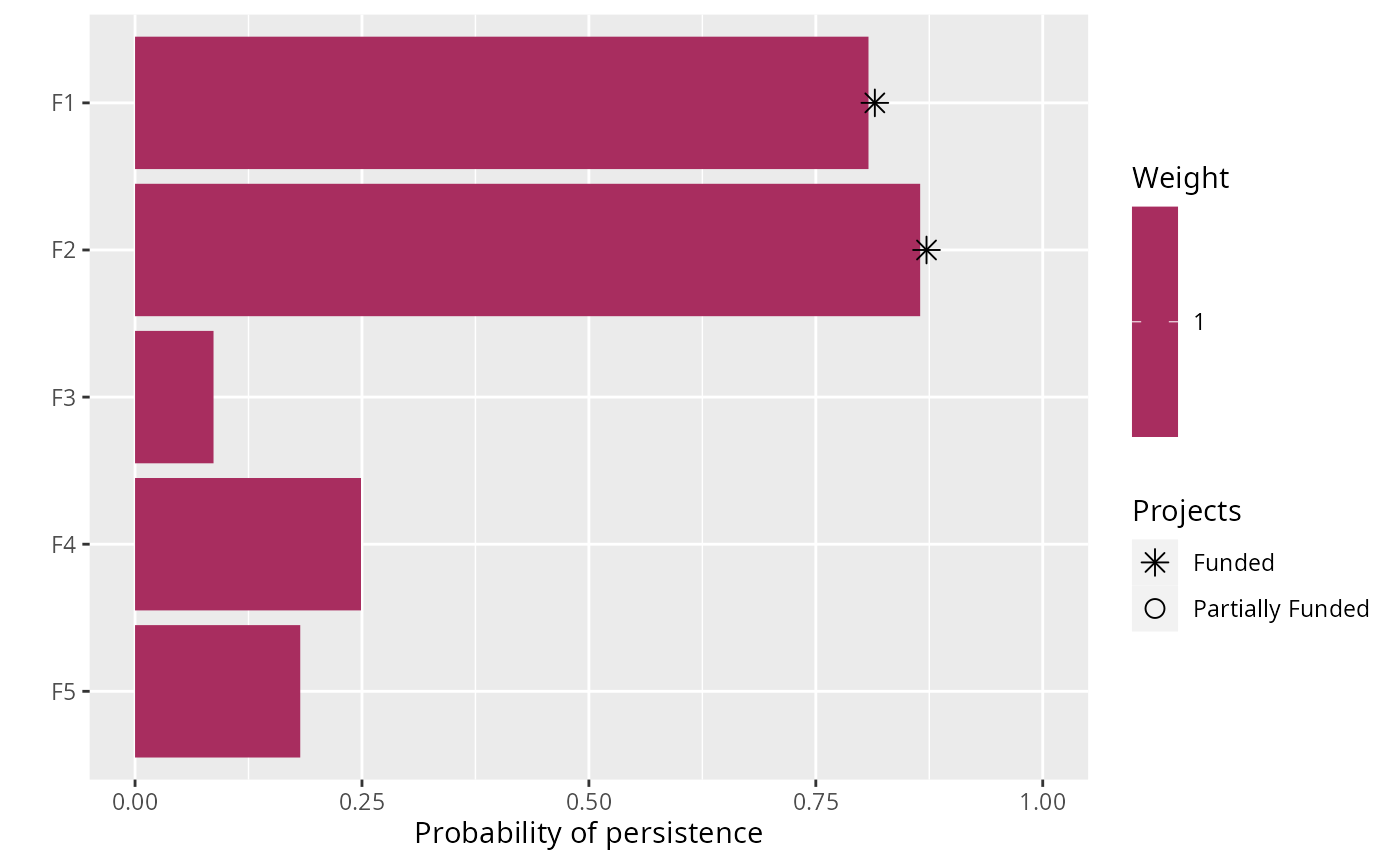Specify that the SYMPHONY software should be used to solve a
project prioritization problem() using the Rsymphony
package. This function can also be used to customize the behavior of the
solver. It requires the Rsymphony package.
add_rsymphony_solver(
x,
gap = 0,
time_limit = .Machine$integer.max,
first_feasible = FALSE,
verbose = TRUE
)Arguments
- x
ProjectProblem object.
- gap
numericgap to optimality. This gap is relative and expresses the acceptable deviance from the optimal objective. For example, a value of 0.01 will result in the solver stopping when it has found a solution within 1% of optimality. Additionally, a value of 0 will result in the solver stopping when it has found an optimal solution. The default value is 0.1 (i.e. 10% from optimality).- time_limit
numerictime limit in seconds to run the optimizer. The solver will return the current best solution when this time limit is exceeded.- first_feasible
logicalshould the first feasible solution be be returned? Iffirst_feasibleis set toTRUE, the solver will return the first solution it encounters that meets all the constraints, regardless of solution quality. Note that the first feasible solution is not an arbitrary solution, rather it is derived from the relaxed solution, and is therefore often reasonably close to optimality. Defaults toFALSE.- verbose
logicalshould information be printed while solving optimization problems?
Value
ProjectProblem object with the solver added to it.
Details
SYMPHONY is an open-source integer programming solver that is part of the Computational Infrastructure for Operations Research (COIN-OR) project, an initiative to promote development of open-source tools for operations research (a field that includes linear programming). The Rsymphony package provides an interface to COIN-OR and is available on CRAN. This solver uses the Rsymphony package to solve problems.
See also
Examples
# \dontrun{
# load data
data(sim_projects, sim_features, sim_actions)
# build problem with Rsymphony solver
p <- problem(sim_projects, sim_actions, sim_features,
"name", "success", "name", "cost", "name") %>%
add_max_richness_objective(budget = 200) %>%
add_binary_decisions() %>%
add_rsymphony_solver()
# print problem
print(p)
#> Project Prioritization Problem
#> actions F1_action, F2_action, F3_action, ... (6 actions)
#> projects F1_project, F2_project, F3_project, ... (6 projects)
#> features F1, F2, F3, ... (5 features)
#> action costs: min: 0, max: 103.22583
#> project success: min: 0.81379, max: 1
#> objective: Maximum richness objective [budget (200)]
#> targets: none
#> weights: default
#> decisions Binary decision
#> constraints: <none>
#> solver: Rsymphony [first_feasible (0), gap (0), time_limit (2147483647), verbose (1)]
# solve problem
s <- solve(p)
# print solution
print(s)
#> # A tibble: 1 × 21
#> solution status obj cost F1_action F2_action F3_action F4_action F5_action
#> <int> <chr> <dbl> <dbl> <dbl> <dbl> <dbl> <dbl> <dbl>
#> 1 1 TM_OPT… 2.19 195. 1 1 0 0 0
#> # ℹ 12 more variables: baseline_action <dbl>, F1_project <dbl>,
#> # F2_project <dbl>, F3_project <dbl>, F4_project <dbl>, F5_project <dbl>,
#> # baseline_project <dbl>, F1 <dbl>, F2 <dbl>, F3 <dbl>, F4 <dbl>, F5 <dbl>
# plot solution
plot(p, s)
 # }
# }